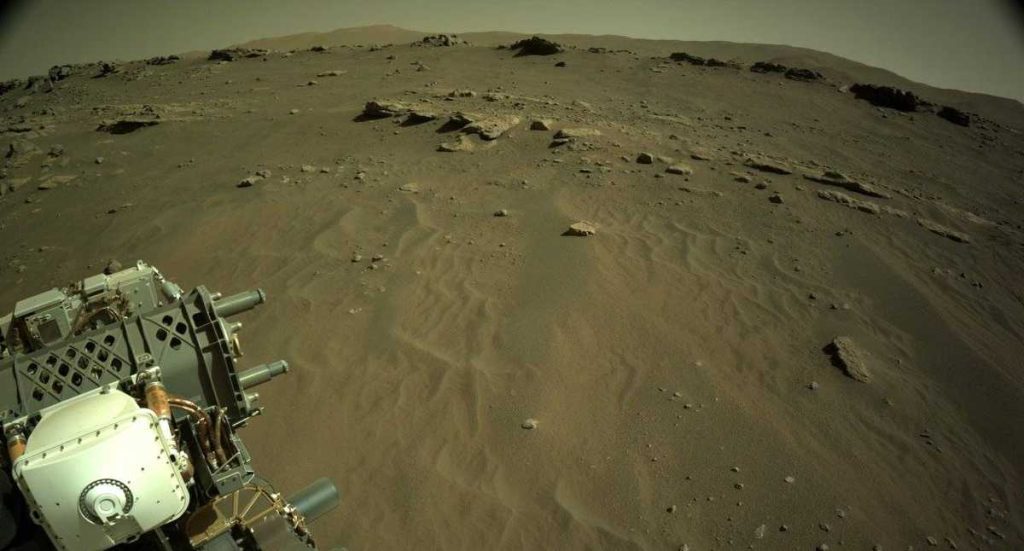On Wednesday, July 27, NASA detailed how it will return to Earth about 30 samples of Martian rock in 2033, a plan that now includes sending two new helicopters to the Red Planet.
The rover Perseverance, which landed on Mars a year and a half ago, has already collected 11 rock samples.
So far, NASA has planned to send another rover to Mars, which will collect samples collected by Perseverance for transfer to the rover. In this module, there will in turn be a small rocket ready to put the samples into the orbit of the Red Planet in 2031.
But NASA decided that the second rover there. Instead, the same tenacity, which has shown a good performance, will approach the rocket, called the Mars Ascent Vehicle.
The samples will be retrieved from perseverance using a robotic arm made by the European Space Agency (ESA) and integrated into the lander, as previously planned.
The craft, which will take off from Earth in the summer of 2028 and reach Mars in the mid-2030s, will have two small helicopters attached to it, as well as the small rocket and robotic arm.
There is already a helicopter on Mars called Ingenuity. Its performance exceeded all expectations: it made 29 flights instead of the five originally planned.
The new helicopters will be a little heavierEquipped with wheels to enable it to move on the ground and a small arm that allows it to retrieve specimens that can weigh up to 150 grams.
In this case, the samples will be dropped by perseverance on the ground, retrieved by helicopter, and deposited on the probe within a few days.
There it will also be captured by the robotic arm, which can extend up to two metres, to be placed in the small rocket.
The samples will finally be transported to a pre-positioned orbiter around Mars, which It is scheduled to take off from Earth in 2027.
Once the payload is recovered, this orbiter will return to Earth to land in the Utah desert in 2033.
Perseverance has a total of 43 sample storage tubes. Soon, dozens will be deposited on the Martian soil to form an emergency stockpile. The other thirty are scheduled to be recovered.
The mysterious image taken by NASA
Is it a tumbleweed, a piece of fishing line, or a plate of spaghetti? Perseverance, a NASA robot that explores Mars, has discovered something that has piqued the interest of space watchers It has led some to think ironically about the quality of this Italian dish on the Red Planet.
Beyond these assumptions, the most plausible explanation is that they are the remains of a component that was used to bring the robotic rover to the surface of Mars in February 2021.
“We’ve been discussing where it came from, but it’s thought to be a piece of rope from a parachute or landing system that lowers the robot to the ground.”A spokesman for the NASA lab said. “You have to keep in mind that it has not been confirmed that it is one thing or the other,” he added.
The wreck was first discovered on July 12 through the left front camera to avoid hazards in the rover. Four days later, when the perseverance returned to the same place, they were gone.
The object was likely carried by wind, as happened with a piece of thermal blanket seen last month, which could have come off the rocket-powered landing system. Garbage accumulation through persistence is seen as a small price to pay for the robot’s scientific goals of searching for biomarkers of ancient microbial life forms.
These objects may one day become valuable artifacts for future colonists on Mars. Amateur astronomer Stuart Atkinson wrote on Twitter, “In a hundred years or so, Mars will enthusiastically collect all this material and display it in museums or turn it into ‘historic gems.
* With information from Agence France-Presse.

“Beer enthusiast. Subtly charming alcohol junkie. Wannabe internet buff. Typical pop culture lover.”

:quality(85)/cloudfront-us-east-1.images.arcpublishing.com/infobae/E5XSENSJDNHJTBDS3WVAI5X2HU.jpg)
:quality(85)/cloudfront-us-east-1.images.arcpublishing.com/infobae/2JXPXNAEEJA5HPISPYS6VEZRCY.jpg)




More Stories
Leica returns to mobile photography in Latin America with the help of Xiaomi with the Xiaomi 14 Ultra
xQc finds out how much money has been spent on his Steam account. “I thought it would be much less.”
Scientist who studied coronavirus claims it was part of a computer simulation: 'It was programmed'